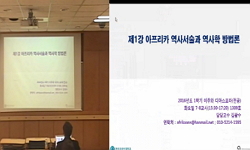고려인의 러시아 이주는 1863년 1월 소수의 조선인이 연해주 남(南) 우수리스크 지역으로 이주하면서 시작, 이후 기근과 봉건사회의 구조적 부조리에 지친 농민들의 이주가 급증한다. 이후 이...
http://chineseinput.net/에서 pinyin(병음)방식으로 중국어를 변환할 수 있습니다.
변환된 중국어를 복사하여 사용하시면 됩니다.
- 中文 을 입력하시려면 zhongwen을 입력하시고 space를누르시면됩니다.
- 北京 을 입력하시려면 beijing을 입력하시고 space를 누르시면 됩니다.

러시아 이주 한인의 체제 적응양상 연구 - 『레닌기치』 수록 서사를 중심으로 = A Study on the Adaptation Patterns of Korean Immigrants to Russia ― Focusing on the Narrative from < Lenin Kichi >
한글로보기https://www.riss.kr/link?id=A107375461
- 저자
- 발행기관
- 학술지명
- 권호사항
-
발행연도
2021
-
작성언어
-
-
주제어
고려인 ; 연해주 ; 이주 한인 ; 디아스포라 ; 소수민족 ; 분산정책 ; 콜호스 ; 집단농장 ; 『레닌기치』 ; Russian Korean ; Koryoin ; Primorsky ; Immigrant Korean ; diaspora ; ethnic minority ; dispersion policy ; Kolkhoz ; collective farm ; 『Lenin Kichi』
-
등재정보
KCI등재
-
자료형태
학술저널
- 발행기관 URL
-
수록면
5-31(27쪽)
-
KCI 피인용횟수
0
- DOI식별코드
- 제공처
-
0
상세조회 -
0
다운로드
부가정보
국문 초록 (Abstract)
연해주 지역 이주 한인에게 콜호스(집단농장)는 단순한 공동 노동의장이 아니었다. 그것은 생활, 교육, 문화, 여가 생활의 기반이고 경제 공동체였으며, 정치적으로는 한인 사회의 지위를 상징하는 것이기도 하다. 고려인 공동체인 콜호스는 소련의 동화정책을 적극적으로 수용함으로써 다른 소수민족들과는 비교도 되지 않을 만큼 성공적인 집단농장 체제를 구축하여 화려한 성과물을 거둘 수 있었다. 게다가 원래 농업 분야에 뛰어난 재능을 갖추었기 때문에 김만삼, 황만금 등의 노력 영웅들을 대거 배출하여 소비에트의 신화를 만들어내며 타민족의 모범 사례로 인정받을 수 있었다.
콜호스라는 집단농장 체제가 이주 한인(고려인)들이 이루어낸 성과만큼 내부적으로 고려인들을 결속시키는 매개적 역할을 충분히 하였는지의 문제는 재고가 필요하다. 콜호스 체제는 고려인들 자신의 이해관계와 필요에 따라 자발적으로 만들어진 조직이 아니라, 소비에트 권력에 의해 인위적으로 구축된 ‘강제된’ 공간이라는 점에서 더욱 그러하다. 다만, 고려인들이 연해주 시기나 중앙아시아로의 강제이주 이후에도 ‘강제된’ 집단농장 체제를 성공적으로 이끌 수 있었던 것은 분산 이주와 강제이주의 역사를 잊고 소련에 동화되어야 한다는 현실 인식, 소수민족 차별이라는 불안감과 조바심이 크게 작용한 것으로 보인다.
따라서 이 글은 1860년대 처음 국경을 넘어 러시아 땅에 발을 디딘한인들의 연해주 정착과정과 농업집단 체제에 대한 이주 한인들의 적응양상을 살펴보고, 이것이 그들의 이주 역사와 문화에 어떻게 기능하는지 밝혀보고자 한다.
고려인의 러시아 이주는 1863년 1월 소수의 조선인이 연해주 남(南) 우수리스크 지역으로 이주하면서 시작, 이후 기근과 봉건사회의 구조적 부조리에 지친 농민들의 이주가 급증한다. 이후 이들은 황무지를 개간하여 농사를 지으며 곳곳에 한인촌을 이루고 정착해나가는데, 1910년대 중반에는 그 수가 8만5천여 명에 이른다. 그러나 러시아 당국은 국경지방의 한인 이주민을 경계하여 내륙지방 아무르강 중앙지역으로 분산 이주케 하고, 소비에트 정부는 연해주의 이주 한인촌을 집단농장 ‘콜호스’(kolkhoz)로 건설하는 정책을 적극적으로 추진한다.
연해주 지역 이주 한인에게 콜호스(집단농장)는 단순한 공동 노동의장이 아니었다. 그것은 생활, 교육, 문화, 여가 생활의 기반이고 경제 공동체였으며, 정치적으로는 한인 사회의 지위를 상징하는 것이기도 하다. 고려인 공동체인 콜호스는 소련의 동화정책을 적극적으로 수용함으로써 다른 소수민족들과는 비교도 되지 않을 만큼 성공적인 집단농장 체제를 구축하여 화려한 성과물을 거둘 수 있었다. 게다가 원래 농업 분야에 뛰어난 재능을 갖추었기 때문에 김만삼, 황만금 등의 노력 영웅들을 대거 배출하여 소비에트의 신화를 만들어내며 타민족의 모범 사례로 인정받을 수 있었다.
콜호스라는 집단농장 체제가 이주 한인(고려인)들이 이루어낸 성과만큼 내부적으로 고려인들을 결속시키는 매개적 역할을 충분히 하였는지의 문제는 재고가 필요하다. 콜호스 체제는 고려인들 자신의 이해관계와 필요에 따라 자발적으로 만들어진 조직이 아니라, 소비에트 권력에 의해 인위적으로 구축된 ‘강제된’ 공간이라는 점에서 더욱 그러하다. 다만, 고려인들이 연해주 시기나 중앙아시아로의 강제이주 이후에도 ‘강제된’ 집단농장 체제를 성공적으로 이끌 수 있었던 것은 분산 이주와 강제이주의 역사를 잊고 소련에 동화되어야 한다는 현실 인식, 소수민족 차별이라는 불안감과 조바심이 크게 작용한 것으로 보인다.
따라서 이 글은 1860년대 처음 국경을 넘어 러시아 땅에 발을 디딘한인들의 연해주 정착과정과 농업집단 체제에 대한 이주 한인들의 적응양상을 살펴보고, 이것이 그들의 이주 역사와 문화에 어떻게 기능하는지 밝혀보고자 한다.
다국어 초록 (Multilingual Abstract)
For the Koreans, Kolkhoz(collective farm) was not just a place for joint labor. It’s a life. education. culture. It was the basis for leisure life, an economic community, and politically as a symbol of the status of Koreans. The Korean community, Kolhoz, actively embraced the Soviet assimilation policy and built a successful collective farming system that was incomparable with other ethnic groups, and was able to achieve splendid results. In addition, because he had excellent talents in the field of agriculture, he was able to produce a large number of heroes such as Mansam Kim and Mangeum Hwang to create Soviet myths and to be recognized as exemplary examples of other people.
However, it is a question to be reconsidered whether the collective farm system played a role as a medium to internally unite the Koreans as much as the brilliant achievements they achieved. Looking at the background of forced migration, the collective farm was not an organization created naturally by the interests and needs of the Koreans themselves, but rather a space that was established with external motives and artificially “forced” by the Soviet power. The reason why the Koreans were able to successfully lead the “forced” collective farm system seems to have been largely driven by anxiety and impatience that the history of forced migration should be forgotten and assimilated into the Soviet Union.
Therefore, this article describes how Koreans, who first crossed the border in the 1860s, settled in the Maritime Territory, and how Koreans responded to the agricultural group system implemented by the Soviet Union in their migration history, taking into account the political and social context of the time. It is in tracking whether it has been introduced and adapted.
The migration of Koryoin to Russia began in January 1863 when a small number of Koreans migrated to the southern Ussuriysk region of the coastal region, and the migration of farmers tired of the famine and structural absurdity of the feudal society ra...
The migration of Koryoin to Russia began in January 1863 when a small number of Koreans migrated to the southern Ussuriysk region of the coastal region, and the migration of farmers tired of the famine and structural absurdity of the feudal society rapidly increased. They cultivate the wasteland, build farming, and establish Korean villages in various places, and in the mid-1910s, the number reached 85,000. However, the Russian authorities warn of Korean immigrants in the border regions and disperse them to the central region of the Amur River in the inland, and the Soviet government actively promotes a policy of constructing a Korean immigrant village in the coastal region as a collective farm called kolkhoz.
For the Koreans, Kolkhoz(collective farm) was not just a place for joint labor. It’s a life. education. culture. It was the basis for leisure life, an economic community, and politically as a symbol of the status of Koreans. The Korean community, Kolhoz, actively embraced the Soviet assimilation policy and built a successful collective farming system that was incomparable with other ethnic groups, and was able to achieve splendid results. In addition, because he had excellent talents in the field of agriculture, he was able to produce a large number of heroes such as Mansam Kim and Mangeum Hwang to create Soviet myths and to be recognized as exemplary examples of other people.
However, it is a question to be reconsidered whether the collective farm system played a role as a medium to internally unite the Koreans as much as the brilliant achievements they achieved. Looking at the background of forced migration, the collective farm was not an organization created naturally by the interests and needs of the Koreans themselves, but rather a space that was established with external motives and artificially “forced” by the Soviet power. The reason why the Koreans were able to successfully lead the “forced” collective farm system seems to have been largely driven by anxiety and impatience that the history of forced migration should be forgotten and assimilated into the Soviet Union.
Therefore, this article describes how Koreans, who first crossed the border in the 1860s, settled in the Maritime Territory, and how Koreans responded to the agricultural group system implemented by the Soviet Union in their migration history, taking into account the political and social context of the time. It is in tracking whether it has been introduced and adapted.
참고문헌 (Reference)
1 정용화, "한국인의 근대적 자아 형성과 오리엔탈리즘" 한국정치사상학회 10 (10): 33-54, 2004
2 박은식, "한국독립운동지혈사" 일우문고 1973
3 윤인진, "코리안 디아스포라 : 재외고려인의 이주, 적응, 정체성" 2003
4 김문욱, "중앙아시아의 한국문화" 좋은땅 2014
5 박명규, "중앙아시아 한인의의식과 생활" 문학과 지성사 1996
6 최한우, "중앙아시아 한인의 의식과 생활" 문학과 지성사 1996
7 윤인진, "중앙아시아 한인의 언어와 민족정체성" 7 : 1997
8 방일권, "중앙아시아 한인 사회와 교육: 1930-40년대를 중심으로" 역사문화연구소 (26) : 83-112, 2007
9 이광규, "중앙아시아 이주 한민족의 정체성 유지와 토착문화의 융합문제" 1998
1 정용화, "한국인의 근대적 자아 형성과 오리엔탈리즘" 한국정치사상학회 10 (10): 33-54, 2004
2 박은식, "한국독립운동지혈사" 일우문고 1973
3 윤인진, "코리안 디아스포라 : 재외고려인의 이주, 적응, 정체성" 2003
4 김문욱, "중앙아시아의 한국문화" 좋은땅 2014
5 박명규, "중앙아시아 한인의의식과 생활" 문학과 지성사 1996
6 최한우, "중앙아시아 한인의 의식과 생활" 문학과 지성사 1996
7 윤인진, "중앙아시아 한인의 언어와 민족정체성" 7 : 1997
8 방일권, "중앙아시아 한인 사회와 교육: 1930-40년대를 중심으로" 역사문화연구소 (26) : 83-112, 2007
9 이광규, "중앙아시아 이주 한민족의 정체성 유지와 토착문화의 융합문제" 1998
10 문중호, "중앙아시아 고려인의 정체성 연구" 서울교육대학교 교육대학원 2009
11 임형모, "조선사람 소비에트 고려인 고려사람 그리고"고향"" 신아출판사 2016
12 김 피오트르 게로노비치, "재소한인이민사-스탈린의 강제이주" 탐구당 1993
13 김외곤, "일본 동양학의 구조" 문학과지성사 2004
14 김호준, "유라시아 고려인 150년" 주류성 2016
15 이재영, "우즈베키스탄 지배집단과 권력엘리트 연구" 대외경제정책연구원 10-19, 2003
16 성동기, "우즈베키스탄 불명의 고려인 영웅 김병화" 재외동포재단 2006
17 권희영, "세계의 한민족 : 독립국가연합" 통일원 1996
18 이광수, "민족개조론" 우신사 1981
19 "레닌기치"
20 보리스 박, "러시아에서의 140년간" 시대정신 2004
21 반병률, "러시아 한인(고려인)사회와 정체성의 변화 ―러시아원동 시기(1863~1937)를 중심으로―" 한국사연구회 (140) : 99-124, 2008
22 박 환, "러시아 한인 유적 답사기" 국학자료원 2008
23 이채문, "러시아 극동지역 한인 농업집단화에 관한 연구 시론(1917∼1937)" 경북대학사회과학연구원 12 : 2000
24 신현준, "동포와 이주사 사이의 공간, 혹은 민족과 국가에 대한 상이한 성원권" 그린비 2013
25 정백, "노농로서아의 문화시설" (6) : 1922
26 P. I. 카파로프, "남우수리지방 민족탐사" 7 (7): 1871
27 김 게르만, "나는 고려사람이다" 국학자료원 2013
28 정동주, "까레이스끼 : 또 하나의 민족사" 우리문화사 1995
29 이희수, "구소련의 고려인사회" 4 : 1996
30 Orlando Figes, "The Russian Revolution of 1917 and Its Language in the Vilage" 56 (56): 1997
31 Gans, Herbert, "Symbolic Ethnicity" 1975
32 Vladimir Brovkin, "Russia after Lenin. Politics, Culture and Society,1921-1929" Routledge 1998
33 정덕준, "CIS 고려인 문학사와 론" 한국문화사 2016
동일학술지(권/호) 다른 논문
-
시에서 ‘서정성’의 전승과 정착 ― 1910년대∼1930년대 시를 중심으로
- 현대문학이론학회
- 윤의섭 ( Youn Eui-seoup )
- 2021
- KCI등재
-
『시의 원리』의 이중 기획과 고안된 논리 ― 조지훈의 베르그손 철학 전유 양상을 중심으로
- 현대문학이론학회
- 송현지 ( Song Hyun-ji )
- 2021
- KCI등재
-
- 현대문학이론학회
- 신익선 ( Shin Ik-sun )
- 2021
- KCI등재
-
괴물-되기의 서사 실험 - 『당신들의 천국』에 나타난 유목적 변신 양상에 대한 연구
- 현대문학이론학회
- 이소연 ( Yi So-hyon )
- 2021
- KCI등재
분석정보
인용정보 인용지수 설명보기
학술지 이력
| 연월일 | 이력구분 | 이력상세 | 등재구분 |
|---|---|---|---|
| 2022 | 평가예정 | 재인증평가 신청대상 (재인증) | |
| 2019-01-01 | 평가 | 등재학술지 유지 (계속평가) |  |
| 2016-01-01 | 평가 | 등재학술지 유지 (계속평가) |  |
| 2012-01-01 | 평가 | 등재학술지 유지 (등재유지) |  |
| 2009-01-01 | 평가 | 등재학술지 선정 (등재후보2차) |  |
| 2008-01-01 | 평가 | 등재후보 1차 PASS (등재후보1차) |  |
| 2007-01-01 | 평가 | 등재후보 1차 FAIL (등재후보1차) |  |
| 2006-01-01 | 평가 | 등재후보학술지 유지 (등재후보2차) |  |
| 2005-01-01 | 평가 | 등재후보 1차 PASS (등재후보1차) |  |
| 2004-01-01 | 평가 | 등재후보학술지 유지 (등재후보1차) |  |
| 2002-01-01 | 평가 | 등재후보학술지 선정 (신규평가) |  |
학술지 인용정보
| 기준연도 | WOS-KCI 통합IF(2년) | KCIF(2년) | KCIF(3년) |
|---|---|---|---|
| 2016 | 0.54 | 0.54 | 0.54 |
| KCIF(4년) | KCIF(5년) | 중심성지수(3년) | 즉시성지수 |
| 0.51 | 0.5 | 0.879 | 0.19 |




 KCI
KCI KISS
KISS






